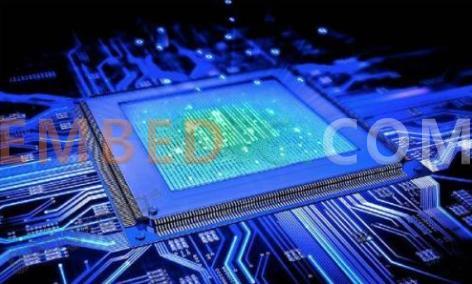Embedded computers are ubiquitous in everyday devices, office supplies, automobiles, industry, medicine and agriculture. From calculators to telephones, cameras, elevators, traffic signals, factory controllers and nuclear power plant control systems, there are physical embedded systems in almost every modern device. What are these? How do they work? What applications are available for embedded computers?

An embedded computer can be broadly defined as any computer that uses computer hardware and software to perform specific functions, as opposed to the general processing performed by modern desktop computers and servers. The specialized nature of these embedded systems allows them to take advantage of a lightweight software or firmware base and on-board ASICS to minimize power consumption and hardware requirements.
Modern processors contain numerous integrated gas pedals for encryption, data and video graphics processing.
Most embedded computers have almost all components placed on a single PCB or motherboard. With fewer interchangeable components, such as RAM, CPU and storage, embedded boards look very different from traditional consumer motherboards. There are usually no slotted components on an embedded board and most components are soldered to the CPU.
1, small size: usually a single high-density PCB design to maximize space efficiency.
2, lower power components: energy-efficient processors with lower TDP for passive or minimal cooling to eliminate fans and moving components.
3, minimal scalability or expandability: Few slot components limit scalability and expandability beyond their initial design and functionality.
4. Low hardware cost: Expansion slots for soldered components are abandoned, and SoCs reduce overall cost and component complexity. Optimized for low-cost mass production of these embedded boards.
Embedded systems must be optimized for low power consumption, code complexity, size and size, weight and cost. Many even lack dedicated on-board user interfaces (mouse, keyboard and screen), which are largely controlled through remote management interfaces, secure enclosures and even direct firmware updates.
CPU and microcontroller (one or more): Logic gates containing transistors and arithmetic processing units (ALU's) packaged within a single chip - they are embedded systems. The processor and controller brain is responsible for performing the main system operations and calculations to get data from all levels of cache (L1, L2, L3) and system memory (RAM).
CPU cache (L1, L2, L3): Due to its optimization for extreme speed, it occupies a significant portion of the die, and it uses a single-level cell architecture (SLC) to increase speed. This means that each cell contains 1 bit of data, due to this data and the high transistor count of this cache. On the CPU, this cache is limited to a very small amount, with the L1 cache being the fastest, but limited to 00 KB, L2 1024 KB and L3 2-16 MB. the speed and proximity of this cache to the CPU is critical to the performance of the processor.
System Memory (RAM): An order of magnitude slower than the cache, but many times faster and more resilient than non-volatile storage such as hard disk drives and solid-state NAND drives, system memory is used to store running applications for fast access and transfer to the processor cache. This memory writes thousands of times per minute as applications move data around and perform complex operations, so it does not suffer from cell degradation and limited write/erase cycles.
Non-Volatile Storage: Hard drives, SSDs, NAND and other non-volatile storage technologies are the slowest but highest capacity storage in the system. This is where the larger system files and data files are stored for normal system use.
CMOS-RAM: This component is responsible for storing important system configuration and real-time information. Powered by a small coin cell battery, it can power down the system without losing its timing and system wake-up functions.
I / O ports: Any connection from the Ethernet RJ45 port to the 3.5mm audio jack falls into this category. They allow systems to accept and process external inputs typically through standardized interfaces such as USB and HDMI.
There are many examples where embedded computers can be used, from small, single-purpose devices such as calculators to complex systems such as automotive cruise control. They are now ubiquitous and inevitable in our daily lives. Examples include calculators, digital cameras, automotive embedded systems (ABS interrupts, car alarms, engine sensor systems), vending machines, elevators, photocopiers, printers, GPS, network devices (switches, modems, routers, access points), video game consoles
Home appliances (AC, microwave ovens, refrigerators).
Some embedded systems are designed to operate in more extreme conditions, such as is the case with industrial grade systems, requiring wide operating temperatures, electric field isolation, vibration resistance, etc. Enterprise-class systems require mission-critical services with computing power, reliability and redundancy.
Machine Vision: Includes all industrial and non-industrial applications where the combination of powerful hardware and trained software provides operational guidance for device execution functions based on the capture and analysis of image sensing data.
Factory Automation: Uses real-time or near-time computing techniques to control and monitor industrial processes, equipment and machines. Often, any repetitive function is ideal for automation, allowing systems to operate through well-defined processes to minimize human interaction.
Digital Signage: The use of digital content broadcast through screens like LED panels, high resolution monitors and projectors.
We can see that almost all of life's electronics depend on embedded systems. With reliable embedded low-cost design, they are always on.
Most of the time hidden behind panels and glossy facades that are invisible to the naked eye, they power all modern technology and interconnected systems. The intelligent use and advancement of embedded smart devices will continue to increase the power and efficiency of our lives.
Manufacturer: Microchip
IC MCU 8BIT 3.5KB FLASH 18DIP
Product Categories: 8bit MCU
Lifecycle:
RoHS:
Manufacturer: Texas Instruments
IC DSP FIXED-POINT 376BGA
Product Categories: DSP
Lifecycle:
RoHS:
Manufacturer: Microchip
IC MCU 8BIT 7KB FLASH 44QFN
Product Categories: 8bit MCU
Lifecycle:
RoHS:
Manufacturer: Texas Instruments
IC DSP MULTICORE 561FCBGA
Product Categories: DSP
Lifecycle:
RoHS:
Looking forward to your comment
Comment